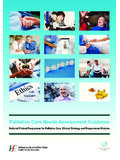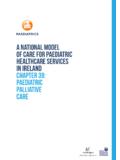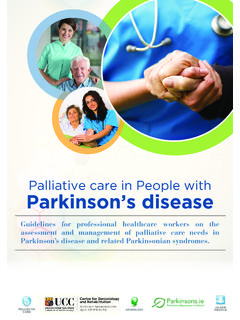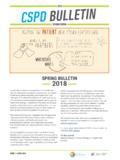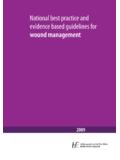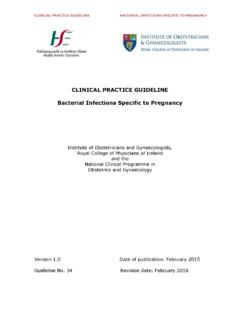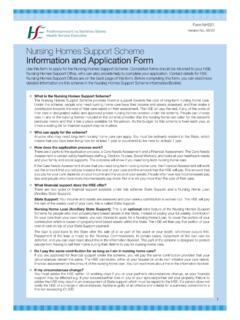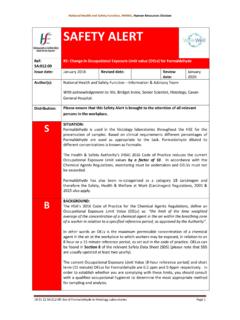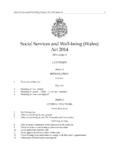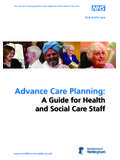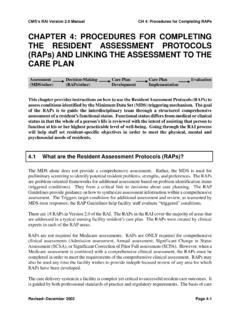Transcription of PALLIATIVE CARE NEEDS ASSESSMENT GUIDANCE
1 Patients with life limiting conditions frequently have multiple symptoms. Patient self report of symptoms varies from person to person. Some physical symptoms are readily reported by patients while others often require prompting. Some of the frequently encountered physical problems in the last year of life are outlined in table : An introductory question to prompt the person to identify the physical NEEDS of most concern to them. Thereafter a thorough and careful systems review will determine the presence and severity of physical identification of symptoms: Elicit a history of symptoms including previous treatments received. Ascertain the effect of the problem on the patient s normal activities function. Consider treatment : Agree and implement a care plan with the patient and multidisciplinary team. Establish whether these symptoms can be managed by the current treating team. If severe or intractable physical problems are identified or anticipated, consider referral to the specialist PALLIATIVE care 1 Frequently Encountered Physical Problems in the Last Year of LifeFrequently encountered physical problems in the last year of lifeSomatic, visceral, neuropathicTake a detailed pain history outlining Location, quality, intensity, duration, frequency Associated/aggravating/relieving factors Treatment interventions to datePainFatigueFatigue disproportionate to level of activity or not relieved by restRespiratoryDyspnoea, cough, oropharyngeal secretionsGastrointestinalAnorexia, nausea, vomiting, constipationNeurologicalInsomnia, confusion, delirium, anxiety, depressionOtherFunctional status, balance problems, oedema.
2 Wound problemsThis is neither a prescriptive nor an exhaustive list- it serves to illustrate the variety of physical problems encountered and need for systematic ASSESSMENT to identify physical problemsPALLIATIVE care NEEDS ASSESSMENT GUIDANCEDOMAIN 2: SOCIAL AND OCCUPATIONAL WELL-BEINGThe family is the unit of care . When assessing patients with life-limiting illness it is important to explore their concerns in relation to their home, family and community, and to identify risk in relation to their autonomy and social :A social ASSESSMENT seeks to gain some understanding of an individual s life experience with regard to their: Background, Family support, Emotional and social support, Practical 2 Suggested Prompts; Social and Occupational Well-being AssessmentAfter identification of concerns: Ascertain the effect of the problem on the patient s normal activities function. Consider treatment : Agree and implement a care plan with the patient and multidisciplinary team.
3 Establish whether these symptoms can be managed by the current treating team. If severe or intractable physical problems are identified or anticipated, consider referral to the specialist PALLIATIVE care PromptsInvite discussion about family and relationships: Who lives with you? Any children/adult dependents? any concerns/worries regarding family or personal relationships?Family SupportDo you have any other support for example PHN, home help, private carers, friends, neighbours? How often do you see them? Do you need more support? What would help?Emotional and social supportDiscussion about practical issues: How are you managing? Any difficulties in: mobilising, managing the stairs, household chores washing, cooking, etc? Any concerns about future care NEEDS , income, finances, sorting out your affairs? What are the person s wishes regarding: Goals of care ? Acceptable levels of intervention? Preferred place of care (person and family)?
4 Practical concerns and advance care planning DOMAIN 3: PSYCHOLOGICAL WELL-BEINGP atients with life limiting conditions frequently have psychological concerns. In order to identify these concerns, it is important that the assessor is proactive in asking about emotional and psychological :Begin with an open exploratory question that invites the person to identify any concerns. Is there anything worrying you? Followed by consideration of the following: Mood and interest Adjustment to illness Resources and strengths Uncontrolled multidimensional pain (total pain) Pre-existing mental illnessTable 3 Suggested Prompts; Psychological Well-BeingSuggested Prompts How is your mood? During the last month have you: been feeling down and/or hopeless? lost enjoyment in interests? Are you depressed? Do you feel tense or anxious? Have you ever had a panic attack? Are there things you are looking forward to?Mood and interest What is your understanding of your illness?
5 Adjustment to illness What is a source of support for you? Look for a range of possible supports: people, hobbies, faith, beliefsResources and strengthsUncontrolled multidimensional pain psychosocial, emotional, spiritual pain; consider if distress contributing to physical symptoms Are there psychological, social, emotional, spiritual issues that may be contributing to symptoms?Total painPersons with a history of current or past mental health problems may be particularly at risk of psychological distressPre-existing mental illnessAfter identification of concerns Elicit history of concerns including previous supports/interventions received. Ascertain the effect of the problem on the patient s normal activities/function. Consider treatment : Agree and implement a care plan with the patient and multidisciplinary team. Establish whether these NEEDS can be managed by the current treating team. If significant complex family and social concerns are identified or anticipated, consider referral to the Specialist PALLIATIVE care Service.
6 DOMAIN 4: SPIRITUAL WELL-BEINGP eople have many different understandings to the word spiritual and how it impacts on their lives. When completing spiritual ASSESSMENT , assessors need to be aware of alternative terms faith, belief, philosophy, religion, inner :An introductory question/s to alert individuals to a change in focus from clinical is required How has this illness impacted on your life? The following is a suggested approach to ASSESSMENT :Table 4 Suggested Prompts: Spiritual Well-Being AssessmentSuggested PromptsWhat gives you hope (strength, comfort peace) in the time of illness?HSources of hopeAre you part or member of religious or spiritual community? Does it help you? OOrganised religionWhat aspect of your spiritual beliefs do you find most helpful and meaningful personally?PPersonal spirituality & practicesHow do your beliefs affect the kind of care you would like me to provide over the next few days/weeks/months?EEffect on medical care and end of life issuesAfter identification of concerns: Elicit history of concerns including previous supports/interventions received.
7 Ascertain the effect of the problem on the patient s normal activities/function. Consider treatment Agree and implement a care plan with the patient and multidisciplinary team. This may include referral to pastoral care service. Establish whether these NEEDS can be managed by the current treating team. If significant complex spiritual concerns are identified or anticipated, consider referral to specialist PALLIATIVE care PALLIATIVE care NEEDS ASSESSMENT GUIDANCE accessible NATIONAL CLINICAL PROGRAMME FOR PALLIATIVE CAREDOMAIN 1: PHYSICAL WELL-BEING
